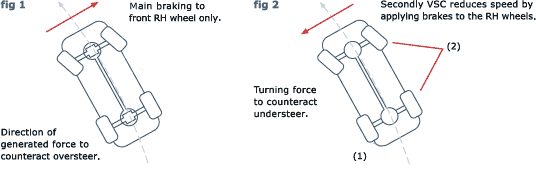![]() | Sam Auto Group | About | 4x4 Vehicles | Accessories |
Executives |
Testimonials |
Mission | Links | Contact |
| Sam Auto Group | About | 4x4 Vehicles | Accessories |
Executives |
Testimonials |
Mission | Links | Contact |
![]()
Toyota Hilux Vigo | Mitsubishi L200 Triton | Nissan Navara | Toyota Fortuner | DMax | Chevy Colorado | Ford Ranger
![]() | Sam Auto Group | About | 4x4 Vehicles | Accessories |
Executives |
Testimonials |
Mission | Links | Contact |
| Sam Auto Group | About | 4x4 Vehicles | Accessories |
Executives |
Testimonials |
Mission | Links | Contact |
![]()
Toyota Hilux Vigo | Mitsubishi L200 Triton | Nissan Navara | Toyota Fortuner | DMax | Chevy Colorado | Ford Ranger
Thailand 4x4 pickup SUV exporter importer of RHD LHD New 2017 and Used Toyota Revo, Toyota Vigo, Toyota Fortuner, L200 Triton, and Nissan Navara
If the vehicle with VSC begins to oversteer or understeer because of an emergency avoidance measure, or by excessive speed in a corner, VSC will automatically activate. By adjusting the engine’s power output and braking each wheel independently, VSC helps to return the vehicle to a ‘zone of stable operation’.
 The system helps to ensure stable cornering performance through the operation of the VSC actuator that provides braking control, and the throttle actuator that controls the engine output. Based on signals from the various sensors, such as the yaw rate sensor and the G sensor, the ECU determines if the vehicle is understeering or oversteering and outputs control signals to the actuators. These actuators then decrease the engine output and/or apply the brake(s) to the front or rear wheel(s) to reduce the vehicle’s yaw moment.
The system helps to ensure stable cornering performance through the operation of the VSC actuator that provides braking control, and the throttle actuator that controls the engine output. Based on signals from the various sensors, such as the yaw rate sensor and the G sensor, the ECU determines if the vehicle is understeering or oversteering and outputs control signals to the actuators. These actuators then decrease the engine output and/or apply the brake(s) to the front or rear wheel(s) to reduce the vehicle’s yaw moment.
When the VSC system takes control it activiates stability correction. The slip indication light flashes while the buzzer activates. The VSC is able to operate at all times except when the centre differential is locked. When the centre differential locks, the VSC-OFF light in the combination meter illuminates to inform the driver that the VSC function has been turned OFF. The centre differential lock is designed for freeing the vehicle if it is stuck in mud for example, however it would be difficult for the vehicle to free itself if the engine output were reduced due to the operation of VSC. Therefore when the centre differential is locked, the VSC function is turned OFF.

 A vehicle normally negotiates a corner according to input from the steering wheel, however surface conditions, excessive speed or emergency avoidance manoeuvres can cause the vehicle to oversteer or understeer. In order to improve the vehicle’s stability under these conditions and therefore reduce the possibility of an accident, the VSC system automatically controls the engine output and the braking of the wheels to help prevent the tyres losing lateral grip.
A vehicle normally negotiates a corner according to input from the steering wheel, however surface conditions, excessive speed or emergency avoidance manoeuvres can cause the vehicle to oversteer or understeer. In order to improve the vehicle’s stability under these conditions and therefore reduce the possibility of an accident, the VSC system automatically controls the engine output and the braking of the wheels to help prevent the tyres losing lateral grip.
OK, so how does the VSC system's improve stability during oversteer or understeer situations?
To understand this it is essential to grasp the basic VSC principle. Visualise a pair of wheels that are connected by an axle.
This simple experiment explains that by applying the brake to one of the wheels, a turning force is generated to change the direction of the wheels.
 Control by VSC during oversteer (Fig 1)
Control by VSC during oversteer (Fig 1)
In this illustration, the vehicle is driven at high speeds while making a left turn. Then, when the rear wheels are slipping outward, the brake is applied only to the front right wheel, generating a rightward force. The rightward force helps the vehicle avoid oversteer by resisting the side slip of the rear wheels. This, in essence, is the principle of VSC that dampens oversteer.
Control by VSC during understeer (Fig 2)
In this illustration, the vehicle is driven at high speeds while making a left turn and the front wheels have just started to slip outward. When VSC detects that understeer is taking place it first applies the brake to the left rear wheel (1), causing the vehicle to generate a leftward turning force and overcome the understeer. Furthermore, VSC applies the brakes simultaneously to the right rear wheel and right front wheel (2) as deemed necessary to reduce speed, thus further reducing understeer. This, in essence, is the principle of VSC that dampens understeer.
Although not immediately apparent or visually obvious, VSC offers the customer peace of mind that if for any reason the vehicle enters a tricky situation, no matter what the skill of the driver, the vehicle will behave in a stable and safe manner within its physical limits. This is particularly important with 4WD vehicles, which due to their high centre of gravity are more easily unsettled while cornering.
 |
 |
 |
| Return to our page on a href="toyota-hilux-vigo.html">Toyota Hilux Vigo | Return to Index Page | Email us now at thai4x4@gmail.com |
© 2002-2017 :: Sam Automotive Group :: All rights reserved ::
![]() thai4x4@gmail.com ::
thai4x4@gmail.com ::